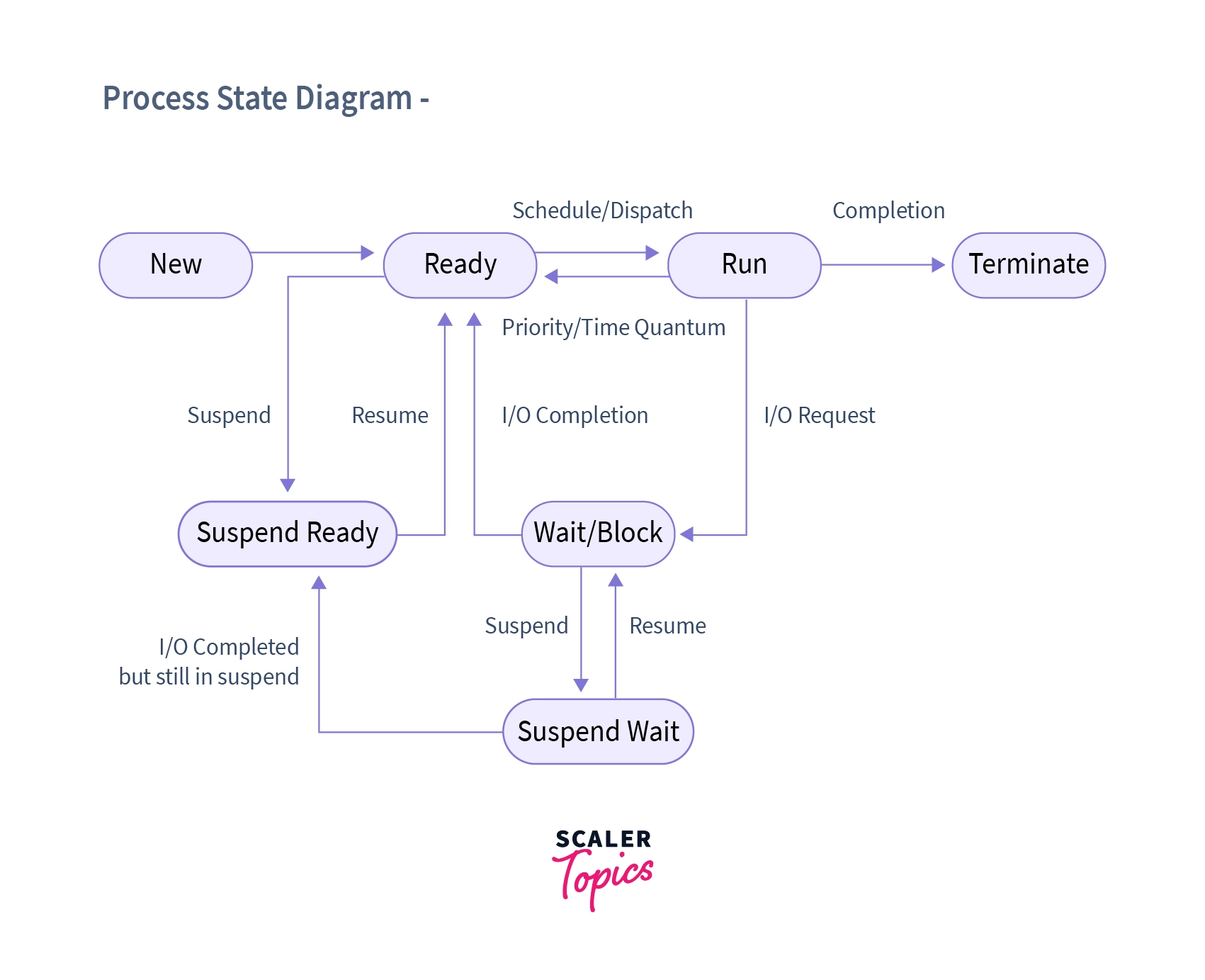5 State Process Model transformation because of Medium Term Swapper

New State
- Jobs are called programs here
- Waiting in the hard disk for memory allocation
- Linking and Loading is still yet to be done
- Program is waiting to be converted into a process / Allocate a Process Control Block
Job Queue
- The programs which are still yet to be converted to a process are waiting here
Long-Term / Job Scheduler
-
Schedules jobs from the job queue to be put into the main memory
-
Long-term scheduler is invoked infrequently (seconds, minutes) → (may be slow)
-
Manages the Degree of Multiprogramming
- Keeps track of the count of available space in the memory to load processes
- A mixture of I/O bound and CPU Bound processes are selected to be loaded in the memory
Ready State
- Loaded in the main memory waiting to be executed
Ready Queue
- The multiple processes which are yet to be executed are queued here
Short-Term / CPU
- Schedules processes from ready queue to be executed into the CPU
- Short-term scheduler is invoked frequently (milliseconds) → (must be fast)
- Algorithms should be devised from the number of processes available in the ready queue such that the throughput of the CPU can be maximum
Running State
- The process is executed in the CPU in here
Migrations from Running to Ready Stage
- Interrupts between processing
- Based on Scheduling Time
Waiting State
- If a process while in running stage requires an I/O event to occur then it is put into this stage
- Process requesting I/O operations are put here
Device Queue
- Multiple requests to use a specific device are put here
On the completion of that specific I/O operation, the state of the process is transitioned to Ready State
Exit State
- If a process is completed entirely then it is put here
Suspending / Swapping Processes
Remove process from memory, store on disk, bring back in from disk to continue execution
Medium-Term / Swapper
- Introduces a 7 State Process Model
- Swaps in and out some processes from ready or waiting queue in to Suspend queue
- The process that is swapped out is called the victim process
Dispatch Latency
The time it takes for the dispatcher to stop one process and start another running is known as the dispatch latency
Why is there a need to Suspend Processes?
-
To Free Resources
- Free up Memory / CPU use by that specific process
-
I/O Operations
- The process maybe waiting for the I/O operation to be completed
-
Synchronisation and Coordination
- The process may be waiting for some other process to complete
Suspend Ready State
-
If memory becomes full, there is a need to swap out some processes from main memory into the secondary memory, thus in that scenario, we will move those processes from Ready State to Suspend Ready State
- That is they are ready to execute but are residing in the secondary memory
The operating system prefers to suspend a blocked process instead of a ready process as blocked process cannot be executed while a ready process can be, but if a sufficiently large memory is required then the processes in ready state are transitioned to suspend ready state in-order to free up the memory.
Suspend Blocked State
- In this state, a process is suspended but waiting for a specific event to occur, such as input from a user or completion of an I/O operation. The process is not eligible for execution until the event it is waiting for happens
- If the wait is complete and the process is ready to execute further, it still has the state of Suspended and thus will be moved to the Suspend Ready State

